Risk Factors in Film Production
Info: 8967 words (36 pages) Dissertation
Published: 5th Oct 2021
Tagged: Film StudiesRisk Management
Contents
Causes of delays in production
4. Contractual obligation of other films
Stunt and film industry in Australia
National Stunt Grading Committee
National stunt grading committee enforceable?
3. Proximity to Emergency Services
4. Amenities and communications
Shooting at locations with similar weather conditions
Script breakdown safety report
Safety Reports Centralised System
Executive Summary
Film production goes through unprecedented conditions to complete a project. After finalizing microscopic details regarding crew, scripts and budget. All these efforts seem to leave nothing to imagination or to chance. After these untiring efforts the production team cannot assume they will not face any uninvited circumstances. To produce films which have potential to attract people, those movies features specific locations, stunts and action with special effects which pose risk and serious threats to film production. Those risky stunt, action or specific location can bring production to halt. Film production needs to be carried out in a way that there should be a backup option for every move and needs to follow guidelines to minimise the risk factor in film production. This report will outline the methods, technologies, protocols and best practices to bring down the risk factor posed to film productions.
Introduction
The film industry has rapidly expanded in the last few years and every year. Film Production company are developing forms with bigger and more Complex action scenes. Film production/art is highly based on creativity elements. These creativity elements come at cost and it almost have likens of gambling, of which you are not sure, you will get back the investment value and anticipated profit targets. Film production often looks easy from outside but its in state of total chaos. Most often, the delays in film production results in loss of revenues and can considerably increase budget of films by millions of dollars. After finalizing the cast, crew members, script and budget, responsibility comes on the shoulders of producer to finish the project with in given time and agreed budget.
Loss Statement
In terms of fatalities, poor film production practices often result in injuries/loss of life which can eventually halt fil production. There are various problems that can result in an accident during the performance of an action sequence. Every year more than 20 to 40 people are killed worldwide while performing various stunts during the development of new feature films (Smith, 2014). Usually, a typical feature film cost $150,000/$200,000 per day (Lloyds, 2014). Which means delay of two days can cost twice as mentioned figure, which is mammoth figure for producer and production house and cannot be ignored.
Causes of delays in production
World we live in is not perfect and film shooting even after planning every microscopic detail, isn’t perfect either. Film production faces different challenges during film shoot, they vary in nature. The most common factors in delaying film productions are listed and explained below (Stephen Mandel Joseph, 2016):
- Actors.
- Stunts.
- Locations.
- Special effects.
- Machinery.
All these film production delaying factors will be explained below:
Actors
Over the years, art of acting kept evolving. Today’s film production houses are producing more and more films in limited time which in old days was considered unimaginable. Actors are now in high demands and they are shooting multiple films at time. With challenging world, actors come short off keeping pace with multiple projects at time and get in trouble with their acting capabilities.
Possible problems producers have to face in film productions due to actors are:
Script Learning/Discussion
Due to multiple films shooting, memory problems actors find it hard to learn script. Sometimes during film production, the script changes. It happens with “Rita Ora” in film of “Fifty shades of Grey”. In “Days of thunder” “Tom Cruise” find hard to learn changing script.
Scheduling
Due to busy schedule of actors, scheduling them for film shoots is often got problematic.
Commitment problems
Some actors are hard to work with because of their commitment problems. On moment of signing them for film, they will agree on appearing the said dates and then there will be no show up at film set at said date. Which causes producers to suffer financially and they bear additional costs.
Contractual obligation of other films
Sometimes the actors must oblige by contract, they have sign with production team of other films. At any given moment, the actors are shooting for multiple films some production houses sign contract with them to avoid delays in films. For example, actor sign contract with one production house stating they must finish the shooting of their film regardless of their other signed films. This becomes hectic for producers to deal with.
Injuries
A lot of films got delayed because of injuries of main actors. Injuries mostly happens on films set and can happens off the set. Injury of main actor delays production depending on nature of injury.
Death
Death of actor cause serious setbacks to film production. Production houses might need to get all movie reshoot with new face cause them suffers financially. It can get worst in a situation that 95% of film was shoot and then they have to reshoot whole 95% of scenes with new face.
Solutions
Production houses can in-corporate the following options to deal with problems associated with actors.
Actor insurance
It is always suggested that to deal with delays in production due to actor nonprofessional attitude or contracts or injuries, they can get actor insured. So, all the additional costs due to delays I project will be covered financially.
Legal contract
Delays on movies with high budget can make production houses suffers financially. So, to deal with conditions like no show up by actor or nonprofessional attitude of actors, pact needs to be signed to make actors responsible for their actions, delays in shoots. Third party will bound actors to show up on agreed dates with sound attitude.
Backup options
It is always recommended for production houses to prepare the list of backup options of actors. If film about to get shoot and actor is backing off from the cast. Production house should eventually come up with second option as this will not cause set back to film production arrangements.
What if an Actor Dies?
Death of an actor is a serious blow to the production of a particular film. The death of a major star can force the production house to permanently close the project. This can have a negative impact on the financial situation of the production company. The impact of the death of a major actor is especially a blow to small and independent production companies with a limited budget. Millions of dollars are spent by the production studios in the development new films. Most of the time these production companies cannot afford to develop a new version of the same film from the starting point. Some mitigation strategies that can be used by the production companies to mitigate the death of an actor are given below.
CGI
The Computer-generated images can be used by the production companies in order to complete the scenes of the actors. This technique is usually used by the production companies when most of the production has been completed before the death of an actor. The production team will create the computer generate images of the actor and insert these images into the scene in order to depict the presence of the actor. The use of CGI images used to depict the role Paul walker in the Furious7 movie is one of the main examples of this technique. The CGI images of the deceased actor were created with the help of his brothers in order to complete the film (Robinson, 2015). The use of the technique allowed the production company to complete the script without changing the script of the project.
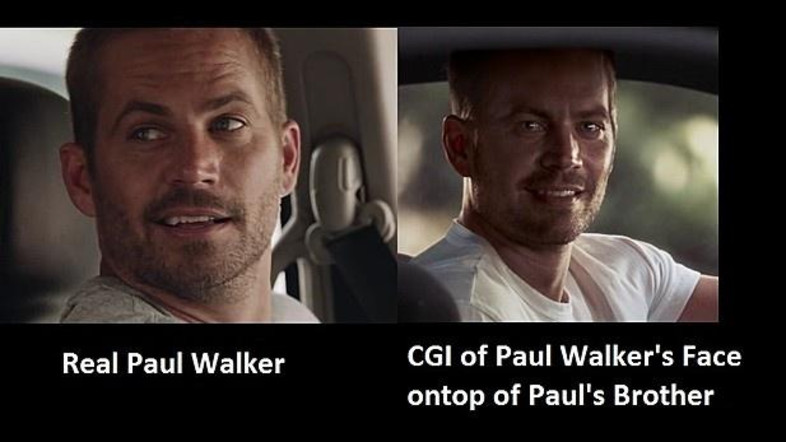
Archived Clips
The production companies can use the Archived Clips of the actors to complete the dialogues of the actors after their death. The use of the archived clips can allow the production companies to develop the dialogues of the deceased actor from their public appearances. This technique can only be used to complete a small number of dialogues because the actors have to express their emotions through the dialogues and these emotions cannot be using the clipping of their public hearings. This technique is usually used by the production companies when most of the production has been completed before the death of an actor. The development of dialogues of the Star Wars. The Last Jedi was completed in this fashion after the death of the lead actress Carrie Fisher (Evans, 2018). The production team spent many hours finding the snippets of the voice of Carrie Fisher. These snippets were used by the production team to complete the dialogues of Carrie Fisher in the film (Jones, 2014).
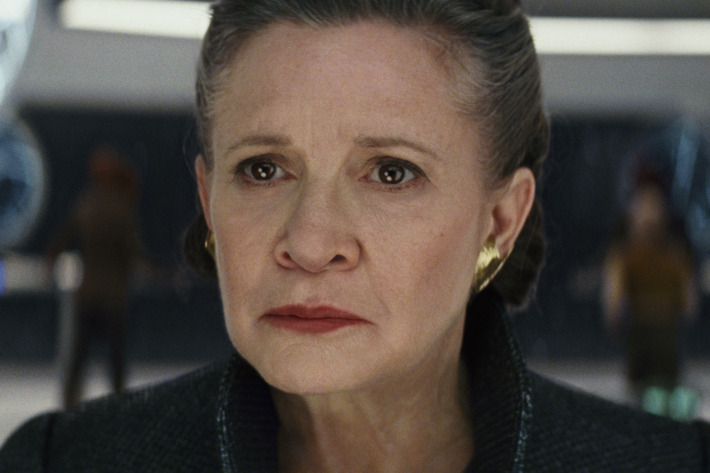
Body Doubles
Body doubles can be used by the production companies to perform certain acts after the sudden death of an actor. The body doubles act as the deceased actor in the film. Face masks are usually used to hide the face of the body doubles to ensure the continuity of the film canon and to preserve the fourth wall. The use of the body double allows the production companies to complete the film without the deceased actor. The use of the body doubles is one of the most cost effective methods of completing the troubled film project.
Camera tricks
Camera tricks can be used by the production companies to create the illusion that the character is being played by the deceased actor. This trick uses dark lightening tricks to ensure that the audience is not able to identify the other actor performing the scene.
Stunts
A lot of films now a day are action packed and contains stunt sequences to make it more interesting. Every year many stuntmen and stuntwomen are injured during the development of various action sequences. The famous incidents and the causes of these stunt related accidents are given below
Bike accident during the development of Resident Evil: A stuntwomen named Olivia Jackson was paralyzed due to a bike accident during the development of Resident Evil. Olivia Jackson is a very talented stuntwoman who has worked in various A-list Hollywood films (Wojnar, 2018). Olivia Jackson was performing a car chase when she collided with a camera arm that was being used to shoot the entire action sequence. The doctors had to amputate the left arm of the stuntwoman after the incident. The use of a functioning camera arm would have allowed the film crew to avoid this particular accident during the shooting of the high speed chase scene.

Paragliding accident during the shooting of XXX: Harry O’Connor was working as the stunt double of Nicolas Cage during the development of the third instalment of the XXX franchise (Wojnar, 2018). The stuntman was able to perform the paragliding scene perfectly during the first take but the stuntman collided with a bridge during the second take of the same stunt. The stuntman died due to head injuries immediately after the impact. The high wind and bad weather could be responsible for the death of the stuntman. The use of CGI effects instead of using the real life Paragliding scene could have prevented the death of Harry O’Connor.
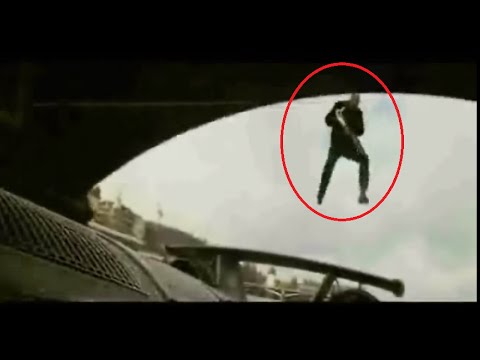
Pilot died during the development of Top Gun: Art Scholl was considered as one of the most talented aerial stuntmen of all times. The stuntman has worked on the various project during his life including major hits like the Indiana Jones and the Temple of Doom, Iron eagle and The Right Stuff (Wojnar, 2018). The stuntman as performing high risk maneuvers using his Pitts S-2 camera plane when his aeroplane started to malfunction (Wojnar, 2018). Art Scholl was unable to control this plane and died at impact due to the malfunction. The proper testing of the plane before the shooting of the stunt could have prevented the accident.
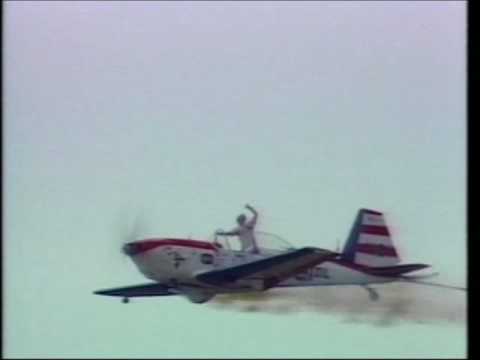
Shooting accident during the shooting of “The Crow”: Brandon Lee was one of the most famous martial art artists in the world. Brandon Lee was shooting a stunt scene for an action movie called The Crow in the state of North Carolina when he was injured by a shrapnel. An improperly cleaned firearm was used during the stunt scene and a shrapnel hit the superstar while he was performing a martial art scene. An investigation in the accident revealed that the use of proper union oversight would have allowed the film production crew to prevent this accident (Wojnar, 2018).
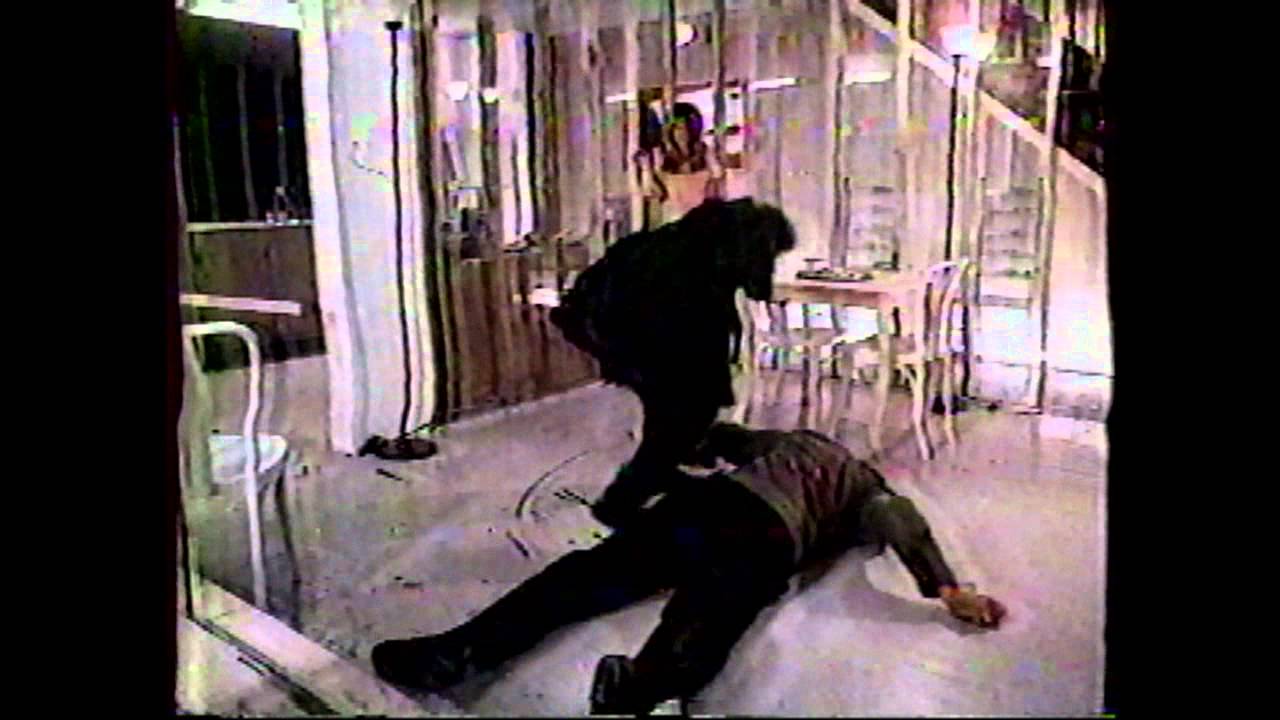
Mitigation strategies
The various methods that can be used by the production companies to reduce the risk of accidents during the performance of the stunts are given below
Development of a proper risk assessment plan can allow the film production companies to access the various risks that are associated with a particular stunt. The development of a risk assessment plan is mandatory in various countries in order to ensure the safety of the employees and the development of a proper risk assessment plan will allow the film production companies to comply with these various compliance requirements. The implementation of the proper risk assessment plan will allow the film production companies identify the dangerous scenes out of an action sequence. Extra safety procedures can be implemented to reduce the risk of injury in these specific scenes of the action sequence.
Stunt coordinate can redesign some of the dangerous scenes present in an action scene in order to ensure the safety of the stuntmen and other crew members involved in the shooting of the scenes. The stunt coordinator can also use some other techniques like the use of dummies and computer generated images in order to successfully complete the production of the action scenes.
The props used in the development of the production scenes should be developed using lightweight materials in order to reduce the risk of injuries at the time of impact with the prop. The lightweight props also help the production team to reduce the risk of injury if a stuntman accidentally falls on the props during the shooting of the action sequence.
The stunt controller and the engineers should work with each other in order to reduce the radiant heat of the explosions in order to prevent burn injuries to stuntmen involved in the development of the new system.
The noise of the blast in the explosive scenes should be significantly reduced in order to prevent loss of hearing in the stuntmen involved the development of the new feature film.
The stunt controller and the engineers should work with each other in order to ensure that the blow of the blast is concentrated in a vacant area in order to prevent injury to the bystanders.
The stunt controller and the engineers should work with each other in order to reduce the number of sharpens, debris and particles in order to reduce the number of injuries caused by these flying objects. The stunt controller can fortify the film set with the help of the protective screens in order to limit the possibility of injury.
The stunt controller and the engineers should work with each other in order to develop stunts with a minimum number of moving parts and vehicles. The increase in the number of moving vehicles can substantially increase the chance of an injury due to malfunction of moving parts and collisions between vehicles and stuntmen during the development of various stunt scenes for the new feature film.
Personal protective equipment should be used by the stuntmen to protect their body from various environmental factors while performing the stunts during the development of the new project. The stuntmen should be trained by the stunt coordinator about the proper techniques of wearing and handling Personal protective equipment during the stunt scenes.
Exclusion zones should be installed and enforced by the film production companies in order to restrict the general public from accessing the area. The exclusion zones will help to prevent the risk of collision between the general public and the stuntmen during the performance of various stunts.
The film production companies should only hire competent people to perform the stunts. The various associations of stuntmen provide certificates to the professional after rigorous training and testing. The use of one type of stuntmen during the performance of another type of stunt can substantially increase the risk of an accident.
The cameras should be placed at a distance from the stuntmen during the production of the various stunt scenes in order to reduce the risk of collision between the stuntmen and the camera equipment.
The stunt coordinator should ensure that the non-participating members are standing at a safe distance during the performance of the stunts in order to reduce the risk of collision between the stuntmen and the non-participating members during the shooting of the various stunt scenes.
A proper shutdown procedure should be developed before the performance of a stunt scene in order to immediately stop the production during an accident.
The first aid kits and first aid personnel should be available at the film set in order to handle any medical emergency.
The performance of a stunt scene should be started after double checking the various safety equipment which will use during the development of the stunt scene for the new feature film.
Specialists should be hired by the film production company to effectively manage the various specialized equipment like the aircraft and firearms that will be used during the development of a stunt scene.
The stunt coordinator should consult a weather specialist before the performance of a stunt scene in order to access the impact of the weather on the environmental conditions. The production of the stunt scene should be delayed in some cases in order to ensure that weather is clear before starting the development of the stunt scene for the new feature film.
The rigs that will be used during the performance of the stunt should be properly tested by the stunt coordinator in order to ensure the safety of the stuntmen who will use these rigs during the shooting of action sequence for the new feature film.
The various members of the stunt performance team should be briefed by the stunt coordinator in order to prevent last minute surprises. The various members of the stunt performance team will be able to coordinate their actions in order to ensure the safety of the stunt performance team during the development of the stunt scene.
Every stunt should be properly planned by the stunt coordinator in order to reduce the risk of injury during the development of the stunt scene for the new feature film.
Activities involving a large number of stuntmen like the free runners and circus performers should be supervised by the stunt coordinator in order to reduce the risk of injury.
Proper rehearsal schedule should be developed in order to allow the stuntmen to properly rehearse and coordinate their stints with other members of the stunt performance team before shooting of the actual scene in order to identify and mitigate various hidden dangers related to the action sequence.
Specialized safety equipment should be stored in different vehicles in order to protect the various members of the stunt performance team in the event of a vehicle failure. The lifesaving jackets should be stored in every boat in order to protect the various members of the stunt performance team from drowning. The parachutes should be stored in the flying vehicles in order to protect the various members of the stunt performance team during freefall events.
Stunt and film industry in Australia
In Australia, Screen Producers (Federal Agency), AEIA (Australian Entertainment Industry Association) and MEAA (Media Entertainment & Arts Alliance) joins hand to address the codes and best practices for producers to follow. In Australia, stunt actors are featured in Stunt Book Australia. These stunt actors must have to go through some training and grading process to feature in Stunt Book Australia.
Laws and litigation

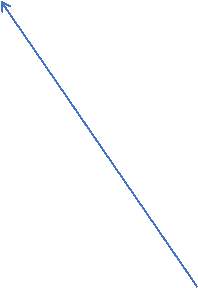
People who works in film industry are protected under “Work Health and Safety ACT 2011”. Which states the producers have the ultimate responsibility to safeguard employee. This law was enforced by the Australian government in the year 2011 in order to ensure the safety of the workers who are working in the various sectors of the Australian Economy. As per NSW rules and regulations, there is pyramid explaining about which laws compliance is mandatory.
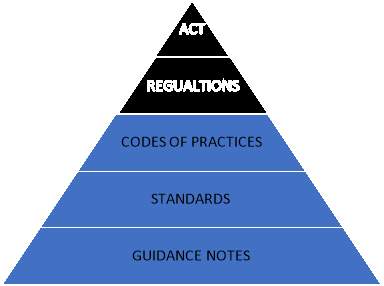
Work Health and Safety Act 2011 (NSW)
COMPLIANCE
Work Health and Safety Regulation 2017 (NSW)
Flow
NSW Codes of Practice
ISO/AU Standards
Screen Production Australia
AEIA Guide
This pyramid gives guidance to producers to adapt the things outlined in standards, guidance notes by which you get compliance with Regulations and ACT. To get compliance with ACT and regulations is mandatory.
How to become Stunt Actor
To become stunt actor or stunt coordinator, process is explained as follows. Each of professional position in stunt industry, must go through special training by providers. After acquiring the required training, professional submits their application to National Stunt Grading Committee. After getting through committee successfully, applicant will be declared as professional stunt industry personnel.
National Stunt Grading Committee
This committee comprises of 12 stunt industry professionals. This committee assess the application of applicant wants to be featured in stunt book Australia. The 12-member national stunt grading committee comprises of:
- 4 graded safety supervisors from minimum 3 states
- 4 Graded stunt coordinators from minimum 3 states
- 4 stunt actors from minimum 3 states
Each of these committee members have minimum 2 years of professional experience.

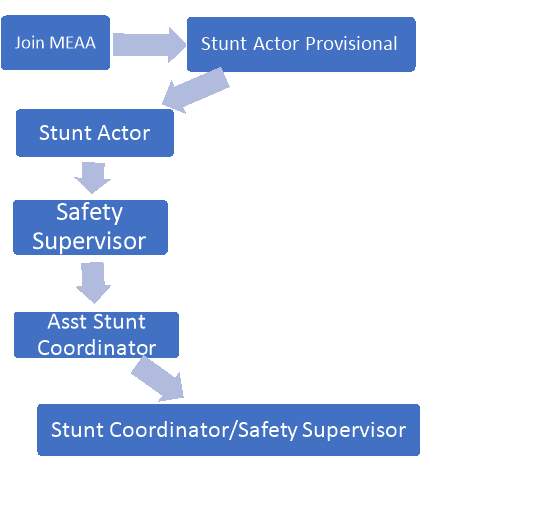
National Stunt Grading Committee
National stunt grading committee enforceable?
Yes, under Workplace Health & Safety Act 2011, Div. 2 (f) it is clearly mentioned that an employer is subjected to “Primary Duty of Care” in any workplace involves the “… provision of information, training, instruction and supervision that is necessary to protect all persons from risks to their health and safety arising from work…”. If producer(employer) employs a ungraded stunt performer. Both producer(employer) and an ungraded stunt performer under the WHS Act 2011 and need to pay fines up to $3,000,000 and can be gaoled for up to 5 years (MEAA, 2018).
Disputes
During shoots and productions of films disputes arises. In Australia, for such situations MEAA and screen productions can play role to sort out disputes and will not cease the film productions. The disputed matter will be referred to “Safety Referral Committee”. This committee comprises of:
- One Nominated Representative From MEAA* & SPAA**
- Each Production House Representative
*Media Entertainment & Arts Alliance
**Screen Producers Australia
Location
Locations can be a factor of delays in film productions. These are as follows:
Weather
Bad weather is one of the main problems faced by film producers during the development of a new project. The bad weather conditions can cause the production to cancel the shooting of a film. The cancellation of the shoot can delay the development of a new film project (Charles, 2016). The delay in development of a new film can in substantially increase the cost of producing the finished product.
Permissions by authority
To get shoot a scene at historical locations. As those buildings are protected by governments you might need to get permissions from central authority or government. Considering to get location evacuated from visitors and specific dates limitation can delay productions
As sometimes to shoot film at historical buildings, production houses needs to have insurance to cover up the possible damages. This too can delay the film productions
Proximity to Emergency Services
To consider a location for shoot, safety supervisor reviews that how far they are from emergency services to get medical aid in case of incidents. This factor if not delay but will create problems for production houses in case of incident.
Amenities and communications
Production houses will prefer the location surrounds with basic amenities and doesn’t experience communication issues. Every prefer location might not have everything accessible. So, considering remote location according to needs might experience communication problems which pose dangerous consequences, as you can’t communicate with emergency services etc.
Solution
In order to avoid delays, production houses should consider safety reports by safety supervisor/ stunt coordinator of locations after being selected. Prior to shoot involving any kind of stunt sequence, safety reports are written, and copies are submit to MEAA and Screen Producer Australia by Safety supervisor /stunt coordinator. Safety supervisor /stunt coordinator review the following things:
- Outlining which a specialised person is required to shoot and assist stunt action
- Procedures to mitigate safety risks.
- Detail areas that require specialist/specialist advice
- Location surveys
- Advise safety requirements of known equipment
- Availability of first aid equipment
- Nearest Emergency Services
Even after all the assurance, it is recommended producers should visit shooting locations along with HOD (Head of Department) 60 hours prior to shoot (Joe Pampanella, 2017). The main purpose of this to have better know/how of area and review the available facilities and weather conditions.
Shooting at locations with similar weather conditions
Sometimes it is impossible for the film producers to shoot the film at a particular location due to bad weather. In these conditions, the film producers can choose an alternative site with similar weather conditions to shoot the remaining parts of the film in order to come successfully complete the project with allocated budget and time. The shooting of “The Revenant” in Argentina is a famous example of producers in using an alternative site to avoid bad weather (Masters, 2015). The first part of “The Revenant” movie was shot in Canada, but weather conditions were not after few months of shooting, so the producers shifted the shooting of the remaining part of the film to southern part of Argentina.
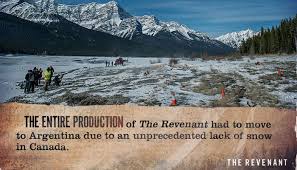
Using indoor locations
Some film producers can use the indoor location in order to shoot the various sections of the film and then add the environment using the CGI graphics technique in order to mitigate the bad weather situation. The use of indoor locations helps to reduce the risk related to bad weather problem. The use of Indoor location seriously affects The authenticity of the scenes which results in a bad quality of films.
Special effects
To film a movie which are packed with special effects are always a priority of every film maker. These effects gives detailed understanding of actions and attracts more peoples. Film production teams in order to execute such effects, they have to get permissions from relative regulator authority. Problems associated with special effects generating elements are as follows:
Firearms
To use firearms, permission from commissioner is required which can be time consuming factors considering security clearance and type of arms intend to use. These are dangerous as well.
Explosions
They are dangerous and can cause serious injury and again to execute these you need to get permit from regulator authority.
Car Racing
To execute shoot involving high speed car actions, permission from regulator authority is required and to evacuate the roads according to needs is hard to achieve.
Animals
To handle the wild animals, you need professional handlers and they are risky as delays are expected to carry out required action sequences.
Aviation
To execute stunt action involving helicopters, planes film production houses needs to get permission from CASA (Civil Aviation Authority Australia). Pilot involving in stunt action must have experience of hundreds/thousands of flight hours. To get that much of experienced pilot is really hard and can cause serious delays in productions.
Solutions for these problems will be discussed later in the report.
Machinery
Faulty machinery involved in film production can cause serious setback to film shootings. If cameras are not working on film set, presence of all cast & crew won’t matter. Its worst thing which can happen on film set.
Solution
So, to avoid these kinds of situations, film producer need to make sure of the following things
- Use of tested and security & operational standard compliance machines should preferred.
- Make sure cameras are well tested before arriving on film set and should be operated and handled by professionals.
- Motion cameras should operate at certain distance, should not obstruct the way of actors & crews.
- Make sure props, riggings and fall arrested systems used in film productions are tested and are compliance with security and operational standards.
- Lightweight materials for dresses and materials should be preferred.
- Make sure certified electrician/ engineer for relevant machinery are present on site.
- Making sure crew is certified for their given roles.
- Insulation of wirings and water related machinery are use accordingly and well insulated to avoid electric short circuits.
Novel solution
The combination of motion capture technique, artificial intelligence as well as the VFX technology can help to solve the various risks that affect the production of a feature film. The producers will be able to easily manage the various risks using the combination of these technologies. The combination of motion capture technique, artificial intelligence as well as the VFX technology can significantly reduce the cost of a new film project. The brief definition of the two technologies is given below
VFX technology
The use of the VFX effects has increased in the last few years due to the various advancements in the different computer technologies used to develop and implement VFX effects (Failes, 2016). The computer graphic images are used to develop the complex VFX effects (Berkowitz, 2018). These computer graphic images are created using computers and then integrated into live action footage in order to create the complex VFX effects. The game engines are usually used by the development teams to create complex VFX designs (GOLDMAN, 2017). The VFX effects are usually divided into two main categories
Digital effects: The digital effects are developed by the direct manipulation of still photographs in order to enhance the quality of the film. The digital effects are used to create realistic scenes.
Special Effects: The special effects are developed by manipulating the live action footage in order to improve the quality of the new film and hide the various mistakes during the post production step.
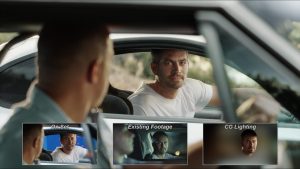
Motion capture technology
Motion capture Technology allows the producers to capture the complex motion of the performer using a variety of different sensors (Dent, 2014). The data collected by the different sensors can be used to create and manipulate the virtual image of the performer. The use of the motion capture technology will allow the developers to film producers to shoot a particular scene from infinitely angles in only 1 take and then select the best scene according to the requirements of the feature film (CreativeStaff, 2018).
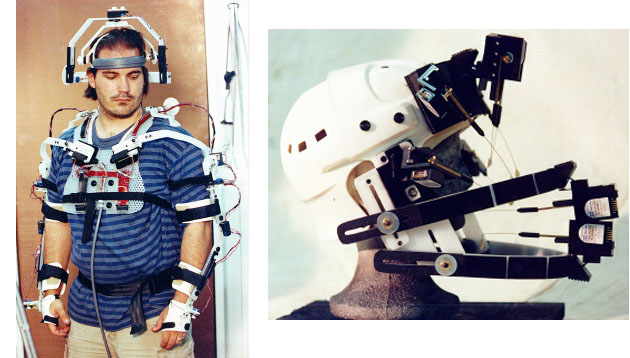
Artificial intelligence
The artificial intelligence technology has improved in the last few years. The artificial intelligence Technology allows computer programmers to automate the development of certain aspects of the program in order to achieve specific goals. The natural language processing and the knowledge representation are the main advantages of using the artificial intelligence technology. The artificial intelligence technology allows the computers to improve their decision making process in order to perform self-correction. IBM Watson is one famous example of artificial intelligence technology (MIX, 2017).
The main benefits of using the combination of motion capture technique, artificial intelligence as well as the VFX technology in the development of new feature films are shown below
Death of an actor
The use of the combination of motion capture technique, artificial intelligence as well as the VFX technology will allow the film producers to shoot the remaining scenes of a deceased actor without any difficulty. The virtual images of the deceased actor capturing using the motion capture Technology will be available to the film production crew. The film production crew will be able to manipulate these virtual images in order to complete the remaining scenes of the actor without any Technical difficulty. The previously captured virtual images of the deceased actors will allow the production team to create entirely new scenes of the actor using a combination of VFX technology and artificial intelligence. The scenes will be integrated into the live action film produced by the production companies using the VFX Technology. This combination will ensure that the production of the new feature film is completed without performing any changes to the original script of the Film.
The combination of artificial intelligence and VFX technology will also allow the producers to create a new set of the deceased actors by analysing the snippets of their previous dialogue scenes. This will allow the production company to express complex emotions in the original voice of the deceased actor. This process will significantly increase the quality of the dialogue without using the voice of a background artist.
Location Problem
The film production companies can use the combination of motion capture technique, artificial intelligence as well as the VFX technology to solve the location problem. These Technologies will allow the production company to integrate the live action sequences performed in the indoor Studio with the footage of the historic building or natural reserve in order to create realistic scenes. The combination of motion capture technique, artificial intelligence as well as the VFX technology will allow the production companies to perform and display various action scenes without damaging the environment. The implementation of these technologies will allow the production companies to reduce the cost of transporting the film crew and film development equipment to the remote areas of the world by using the indoor locations to shoot all the important scenes of the features film.
a) Weather Problem
The problem of bad weather or unsuitable outdoor shooting conditions can also be solved by using the combination of motion capture technique, artificial intelligence as well as the VFX Technology. The combination of motion capture technique, artificial intelligence as well as the VFX technology will allow the filmmakers to develop and integrate real life weather conditions in indoor scenes. The artificial intelligence Technology can be used by filmmakers to create realistic weather effects during the post production of the feature film. The images of various objects present in a scene can be automatically using the artificial intelligence technology according to the weather depicted in a particular scene in order to requirements of the film maker.
Special effects
The film production companies can use the combination of motion capture technique, artificial intelligence as well as the VFX technology to minimize the risk of fire at a film set. The film makers will be able to shoot explosive scenes without using any actual explosives with the help of the VFX technology. The use of the VFX technology will allow the film production companies to render the effects of an explosion using the physics rendering engines of the game engine software. The film production companies can then integrate these pre rendered scenes into the film in order to display the explosives without endangering the lives of the crew members. Same goes for animals, aviation, smokes, crowd and car racing.
Stunts
The combination of motion capture technique, artificial intelligence as well as the VFX technology should be used to create complex action scenes without having to perform the actual stunts. The film production companies will be able to develop the whole action sequence in indoor locations without endangering the lives of the stuntmen using this technique. The combination of motion capture technique, artificial intelligence as well as the VFX technology will it reduce the overall risk involved in the development of the action sequence. The liability, as well as the rehabilitation cost for injured or deceased stuntmen, will be significantly reduced after the implementation of these techniques in the development of action sequence. The number of stunt related accidents will be significantly reduced after the implementation of the combination of motion capture technique, artificial intelligence as well as the VFX technology in the development of the action sequences.
Script breakdown safety report
Safety supervisor /consultant break downs the script and outlines the sequences which contains any kind of associated risks (Joe Pampanella, 2017). This is designed to check the effectiveness of applied controls against the risk. The template for script breakdown safety report is as follows:

Risk assessment table
Risk assessment calculation are carried out to calculate the risk factor (Joe Pampanella, 2017). This tool is used to calculate the risk posed to actor/ environment/ asset. The scales for sensitivity, severity, frequency and exposure in script breakdown safety report is outlined in this following table:
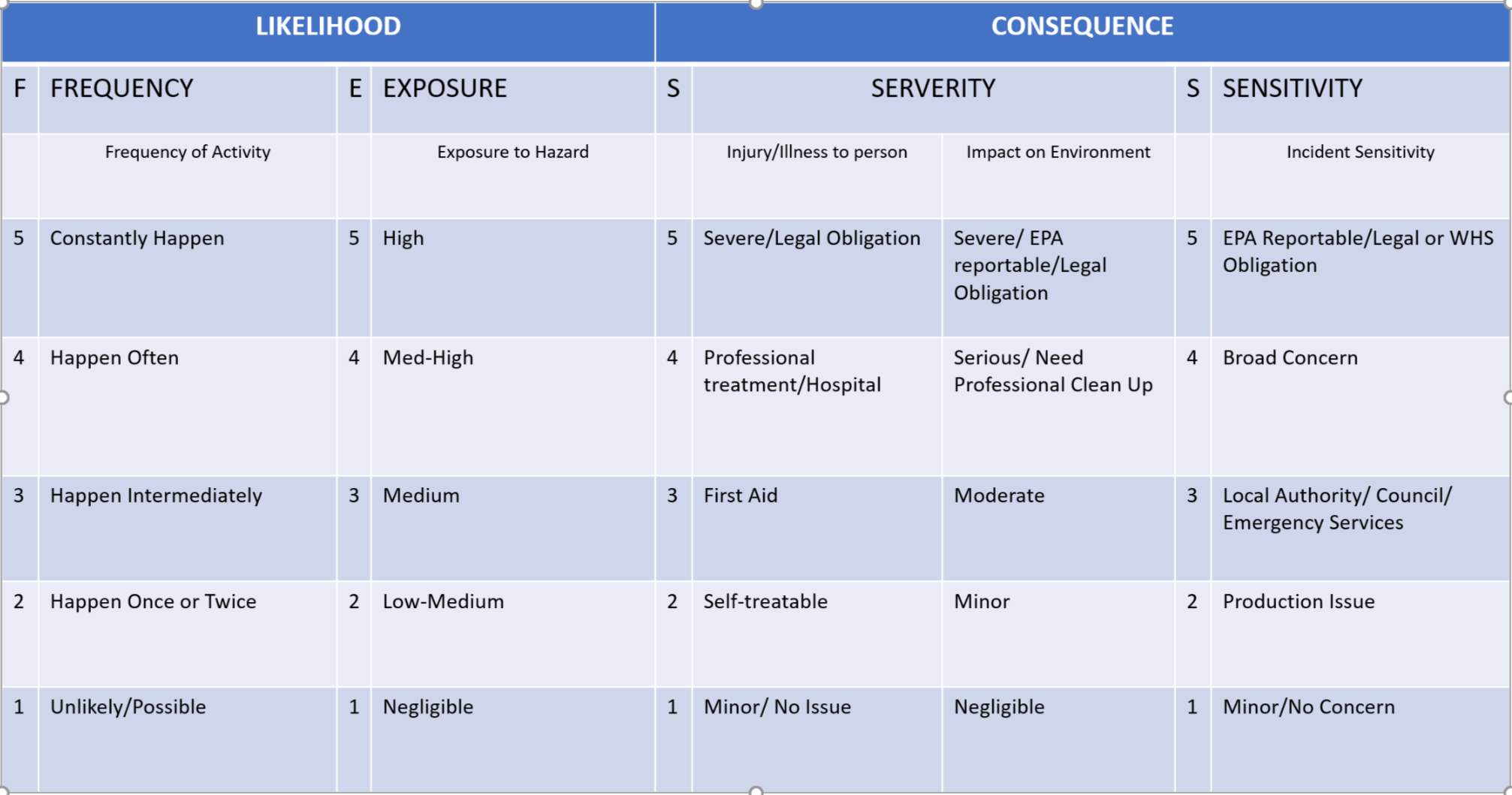
Risk assessment calculations
These calculations are submitted by HOD (Head of Department)/ relevant supervisor to production and carried out by safety supervisor/consultant.
- Average of likelihood x Total Sum Of consequence = Risk Score
- (AVG of F+E) x (Sum of S+S) = Risk Score
| RISK SCORE | 0-10 | 11-25 | 26-35 | 36-50 |
| RISK RATING | MINOR | MODERATE | SIGNIFICANT | HIGH |
The main idea is to check the risk factors after and before applied controls. This checkout the effectiveness of controls implemented. Risk score after applied control should falls in to score which is acceptable for safely carrying out the film shoot. If risk is accepted, then the risky sequence needs to be carried out under supervision. If risk score is outlined as tolerable though its score is high, then specialist personnel needs to carry out sequence following with Written Risk Analysis/Safe Work Method Statement.
Recommendations
Based on key findings and studies there are some recommendations that can be incorporated by MEAA, Screen Production Australia. These are as follows:
Safety Reports Centralised System
Upon researching, the safety reports by safety personnel are submitted to MEAA and SPAA. Reports majorly based on hardcopies, can be altered or can be lost. In that case, if any incident happen the forensics investigation can be made on false claims. In this situation prosecution will be hard. So, there must lies centralised systems for safety personnel to fill up the safety reports through online systems. By this, one can be held accountable. These can help to raise safety standards bars based on available case studies.
Use of CGI, VFX, SFX
The use of these technologies should be encouraged to minimise the risk factors and to enhance productivity.
Emergency Resources
Like UK government (HSE, 2007) have provided the tool to calculate how many ambulatory resources needs to be on site depending upon nature of gathering, number of people, nature of seating, nature of genders varying with age group and other circumstances, representing their data gathering intelligence and provides guidance to employer for ambulatory services.
Conclusion
The development of a new feature film is a high risk project (Smith, 2014). Film productions facing delays are because of bad choices made in any department of film making as the consequences every year more than 20 to 40 people are killed worldwide while performing various action/stunts during the development of new feature films (Smith, 2014). The safety of these employees is very important to prevent the loss of human life and delays in the production of films. The use of new ICT technologies like the motion capture technology, artificial intelligence technology and the VFX technology can allow the film makers to develop high quality scenes while minimizing the risks.
Following recommendations of centralised system for safety reports will help film producers to raise bars of safety. On the other hand, MEAA and SPAA can improve their guides to safety based on available safety reports from centralised system. The government should provide employers the guide to ambulatory resources they should have for given nature of gathering, genders and age group.
References
Smith, J. (2014). Hollywood’s health and safety nightmare. [online] Telegraph.co.uk. Available at: https://www.telegraph.co.uk/culture/film/10938938/Hollywoods-health-and-safety-nightmare.html [Accessed 17 June 2018].
Stephen Mandel Joseph (2016) How to Tackle the 5 Most Common On-Set Emergencies. Available at: https://www.videomaker.com/article/c11/18527-how-to-tackle-the-5-most-common-on-set-emergencies [Accessed 17 June 2018].
Lloyds (2014). Risky Business: Insuring the film and television industry Available at: https://www.lloyds.com/news-and-risk-insight/news/market-news/industry-news-2014/risky-business-insuring-the-film-and-television-industry [Accessed 17 June 2018].
Berkowitz, J. (2018). Anatomy Of A Scene: How The “Deadpool” VFX Team Made That Insane Opening Sequence. [online] Fast Company. Available at: https://www.fastcompany.com/3057449/anatomy-of-a-scene-how-the-deadpool-VFX-team-made-that-insane-opening-seque [Accessed 30 Apr. 2018].
Wojnar, Z. (2018). 15 Tragic Accidents On The Sets Of Famous Movies. [online] Screen Rant. Available at: https://screenrant.com/tragic-movie-accidents-on-set-famous/ [Accessed 1 May 2018].
MIX (2017). IBM had filmmakers teach its Watson AI how to make movies. [online] The Next Web. Available at: https://thenextweb.com/artificial-intelligence/2017/06/29/ibm-watson-supercomputer-ai-film-story/ [Accessed 1 May 2018].
CreativeStaff (2018). Why motion capture is set to radically change in 2015. [online] Creative. Available at: https://www.creativebloq.com/3d/why-motion-capture-radically-change-2015-121413749 [Accessed 30 Apr. 2018].
Evans, N. (2018). How Carrie Fisher’s Death Caused Technical Difficulties On The Set Of Star Wars: The Last Jedi. [online] CINEMABLEND. Available at: https://www.cinemablend.com/news/1737300/how-carrie-fishers-death-caused-technical-difficulties-on-the-set-of-star-wars-the-last-jedi [Accessed 30 Apr. 2018].
Failes, I. (2016). The Future of VFX: 5 Major Trends Happening Right Now. [online] AV3 Software. Available at: https://www.av3software.com/blog/the-future-of-VFX-major-trends/ [Accessed 30 Apr. 2018].
GOLDMAN, M. (2017). THE FUTURE OF VFX: INDUSTRY LEADERS LOOK AHEAD – VFX Voice Magazine. [online] VFX Voice Magazine. Available at: https://VFXvoice.com/the-future-of-VFX-industry-leaders-look-ahead/ [Accessed 30 Apr. 2018].
Jones, N. (2014). How The Last Jedi Handles Carrie Fisher’s Death. [online] Vulture. Available at: http://www.vulture.com/2017/12/star-wars-the-last-jedi-carrie-fisher-death.html [Accessed 30 Apr. 2018].
Masters, K. (2015). How Leonardo DiCaprio’s ‘The Revenant’ Shoot Became “A Living Hell”. [online] The Hollywood Reporter. Available at: https://www.hollywoodreporter.com/news/how-leonardo-dicaprios-revenant-shoot-810290 [Accessed 30 Apr. 2018].
Robinson, J. (2015). Here Are Three Paul Walker Furious 7 Scenes That Proved Especially Hard to Digitally Create. [online] HWD. Available at: https://www.vanityfair.com/hollywood/2015/10/paul-walker-furious-7-scenes-digitally-recreated [Accessed 30 Apr. 2018].
Health and Safety Executive HSE (2007). The event safety guide (Second edition). [online] https://www.qub.ac.uk/safety-reps/sr_webpages/safety_downloads/event_safety_guide.pdf [Accessed 17 June 2018].
MEAA. (2018). Stunt Performer FAQ’s [online] https://www.meaa.org/meaa-equity/stunt-performers/stunt-performer-faqs/ [Accessed 17 June 2018]
Joe Pampanella, (2017). DRAFT WHS Management Manual [online] https://www.meaa.org/draft-screen-production-workplace-safety-code/#bottom [Accessed 17 June 2018]
Cite This Work
To export a reference to this article please select a referencing stye below:
Related Services
View allRelated Content
All TagsContent relating to: "Risk Management"
Risk Management is a process for identifying, understanding and mitigating any risks that are associated with a particular task or event. Individuals and organisations implement Risk Management to provide a layer of protection, allowing them to minimise risk in their operations.
Related Articles
DMCA / Removal Request
If you are the original writer of this dissertation and no longer wish to have your work published on the UKDiss.com website then please:




